The NZXT S340 Case Review
by E. Fylladitakis on July 13, 2015 8:00 AM EST- Posted in
- Cases/Cooling/PSUs
- NZXT
- Case
- ODD-Free
The Interior of the NZXT S340
With the side panels removed, we can admire the smooth matte black interior of the S340. The glossy white paint that covers the case’s exterior is sprayed only on the rear frame and the metallic cable cover.
The first thing of particular note about the S340 is the metallic cover that separates the PSU compartment and the rest of the system. Unlike the vast majority of designs, it is part of the frame and cannot be removed. This enhances the mechanical strength of the case but it somewhat limits its flexibility and ease of use. An asymmetric opening on the motherboard tray allows for the installation of advanced cooling solutions with the motherboard still inside the case.
Instead of opening several holes and covering them with grommets, NZXT cut open the entire right side of the motherboard tray and is using a single removable metallic cover for it. The downside is that the removable cover has all the cable ties on it and therefore it is very likely that they will have to be cut each time the cover needs to be removed. It also is somewhat flimsy and bends very easily, even with minimal stress, requiring from the user to bend it back in shape in order for the mounting holes to align when reinstalled.
Two 2.5” device trays are mounted at the bottom of the system compartment, on top of the black metal frame that separates the PSU compartment from the rest of the case. There are openings for the cables right in front of them, as well as another smaller opening to their right. Each tray is secured with a single thumbscrew. Large expansion cards installed at the lower slots of the motherboard will block access to these two trays, forcing the user to remove the card in order to access them. However, the S340 is not really the case of choice for tri-SLI systems, so it is highly unlikely that actual users will face this problem.
Only three 3.5” drives can fit in the S340. Two of them can be installed in the small cage at the front of the PSU compartment, near the bottom of the case. This cage is not removable. The third one can fit under this compartment, bolted directly to the bottom frame of the case. The removal of the faceplate is necessary in order to secure the drives in the cage, as the screws are inserted from the front of the case. For the third drive, the user has to flip the case to its side, as the holes are at the bottom of the case.
There is no active cooling directly aimed at the 3.5" drives, which rely on the semi-passive airflow of air that will enter from the front of the case through the vents at the top of the drive's cage and out of the case via the exhaust fans. This setup depends on negative pressure airflow and can cause performance issues if a radiator or two intake fans are installed at the front of the case. With this design, the exhaust flow needs to be significantly stronger than the intake flow, otherwise the passive air intake through the vents will be far too low to offer the 3.5" devices reasonable cooling.
There are two stock fans installed in the S340, one 120 mm fan at the rear and another identical fan at the top of the case. Although either of these could be removed to give their place to liquid cooling radiators, there is little clearance between them and the motherboard, which will undoubtedly lead to compatibility issues (we have read that users cannot fit a H105 for that reason). That however will not be necessary as two intake fans or up to a 240/280 mm liquid cooling radiator can be installed at the front of the case, where plenty of room is provided. It remains strange why NZXT installed a 120 mm fan at the top of the S340, where a 140 mm can fit.
As we noticed in the previous page, the PSU compartment is located at the lower rear side of the case, where a cover is held in place with four thumbscrews. Removing the cover and inserting the PSU from the rear of the case is the only way possible to install it in the S340, as it will not fit from the side. Once inserted, the PSU sits directly on metal impressions of the bottom chassis panel. Theoretically, a PSU of any length can fit inside the S340 but we strongly recommend not to install a unit longer than 180 mm, otherwise cable management could become very difficult.
For the means of this review, we installed a Corsair AX760i with the red cable set, for strong visual contrast. It fits without issues inside the NZXT S340 and the cables are long enough for a standard system. Individually sleeved cables however are stiff and are not ideal for the design of the S340 as the metallic cable management cover requires the cables to take sharp turns. Due to the narrow spaces and sharp turns, stiff cables place excessive stress on the connectors and are difficult to manage.
The system area of the NZXT S340 is large enough for a standard ATX system to fit comfortably. Aside from the large opening at the right of the motherboard tray, several other small openings help with the routing of cables between the compartments through the right side of the case. Without fans or a liquid cooling radiator, cards up to 35 cm can easily fit inside the S340. It is possible to calculate how much clearance is left for the cards after fans or a radiator is installed though. The total clearance to the front of the case is 36.4 cm, therefore the thickness of a radiator or the fans can be simply subtracted from this length. For example, if a 3 cm thick radiator with 2.5 cm thick fans is installed, that reduces the available clearance down to 36.4 - 3 - 2.5 = 30.9 cm.
The cards are held in place using thumbscrews, inserted from the rear of the case. Usually, designs that employ the securing of cards from the rear of the case also have covers to shield the opening and the screws. This is not the case with the S340, where a fairly large permanent opening is present next to the expansion slots and the thumbscrews are always accessible from the outside of the case.


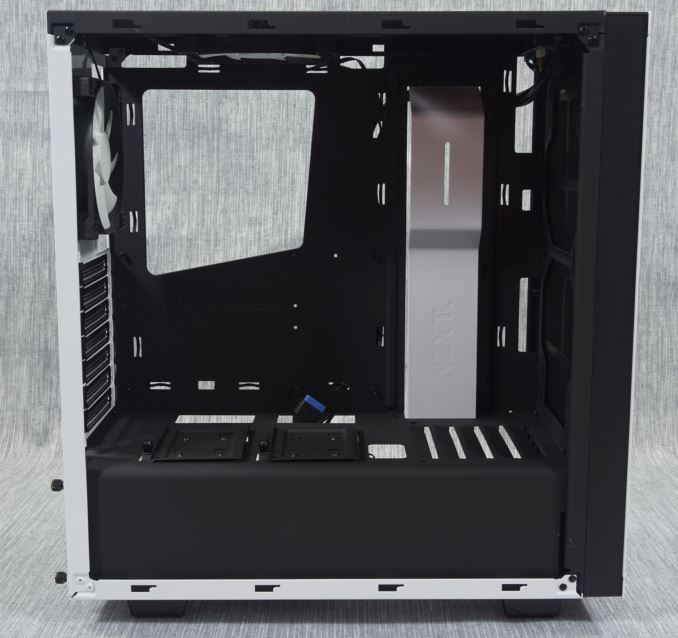
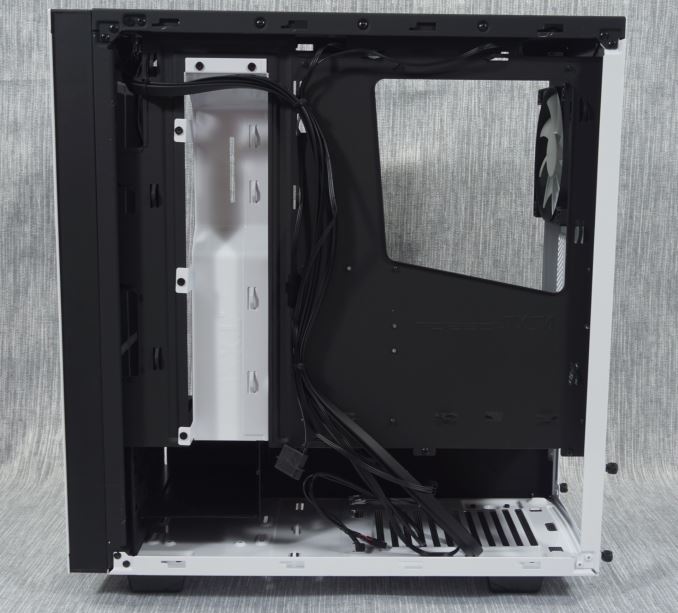
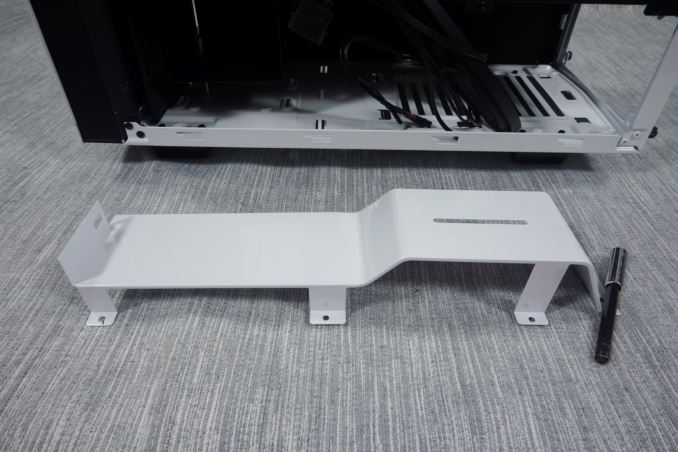
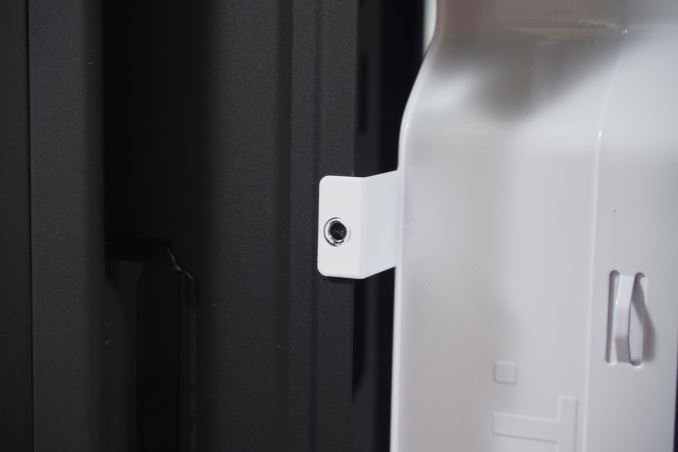
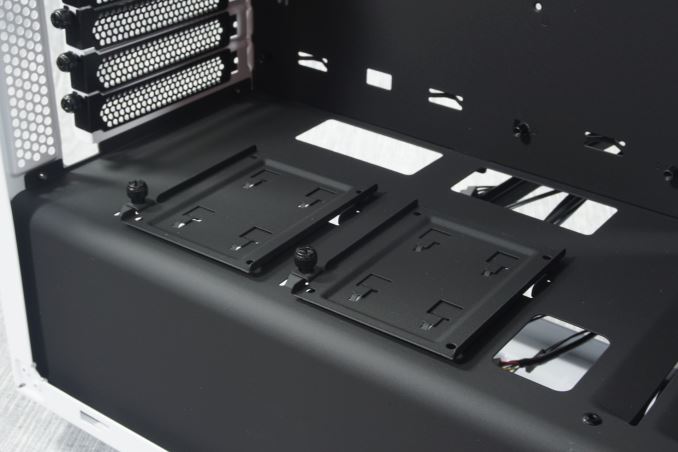

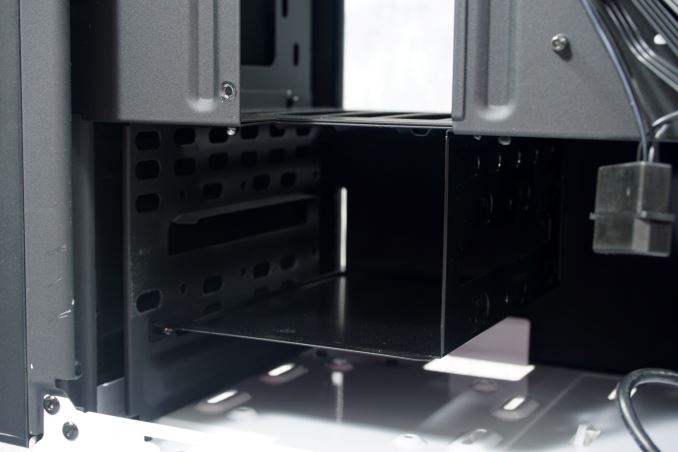
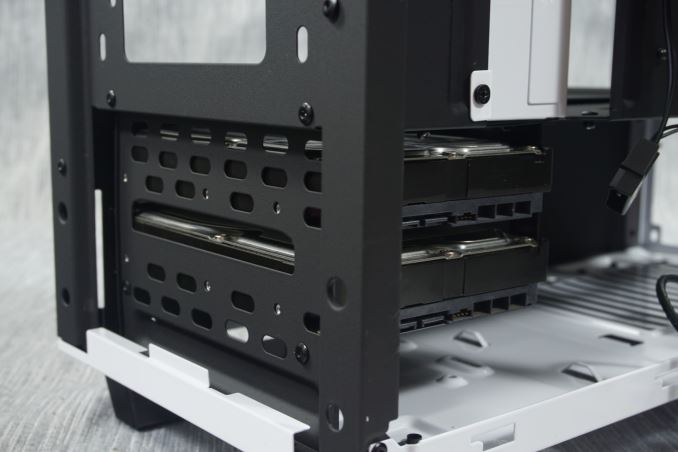
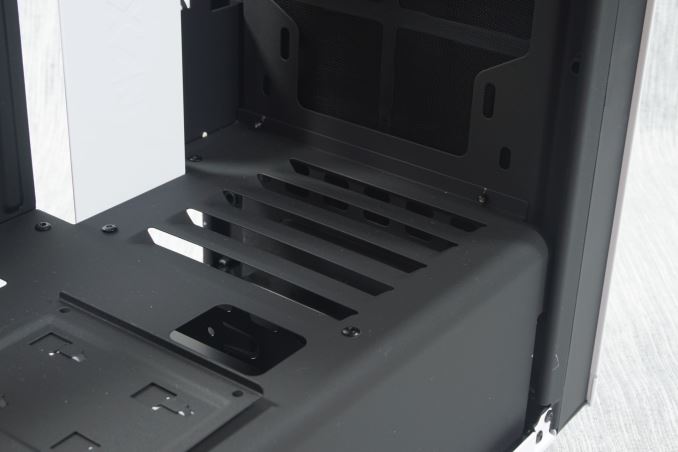
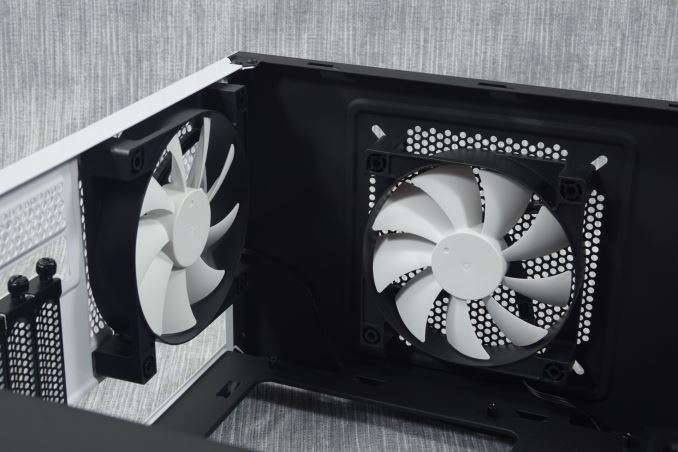
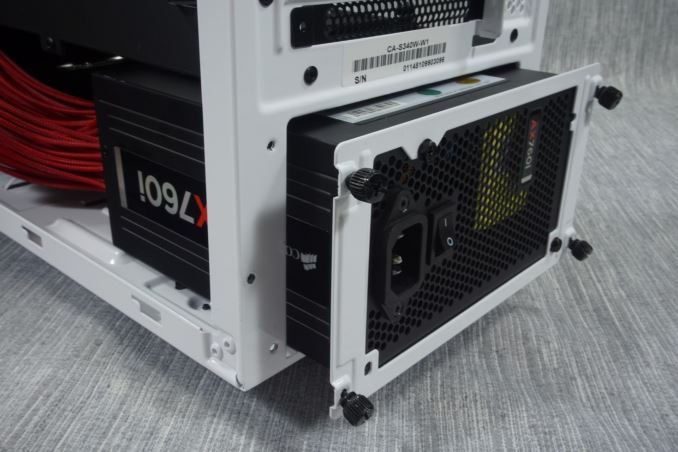
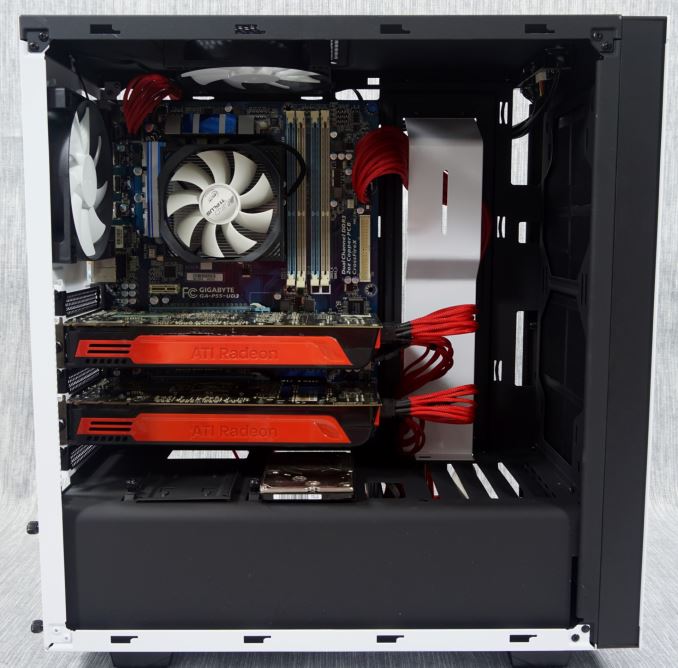
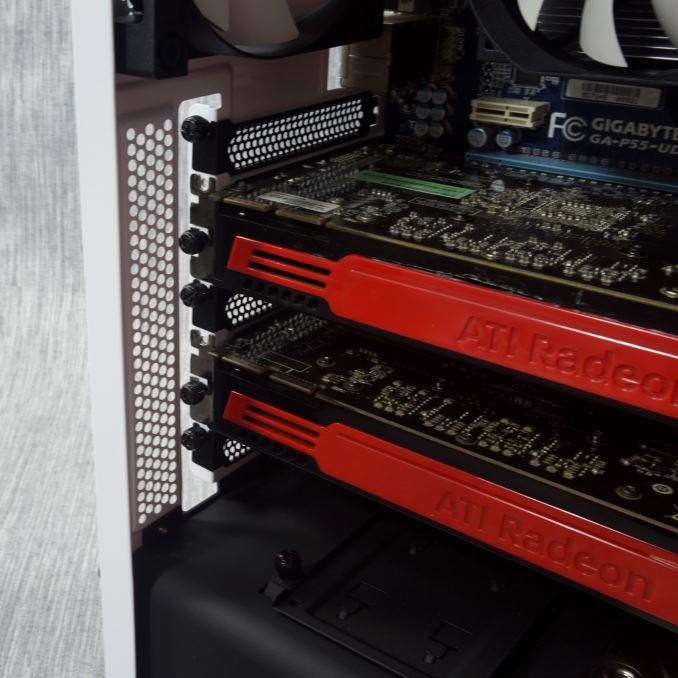








48 Comments
View All Comments
Impulses - Monday, July 13, 2015 - link
People are so eager to ditch ODDs, might as well use USB hubs too instead of front ports! Just being facetious, I know the latter takes up little room, probably just a sacrifice in order to hit their price point.BrokenCrayons - Tuesday, July 14, 2015 - link
I'm not sure there's a good reason to push along the demise of optical media. Yes, very slow, takes a lot up a lot of space, and is losing relevance over time, but in a desktop system where space isn't typically a major concern there's not as much of a reason to abandon optical drives very quickly. Laptops, on the other hand, benefit from it because the space can be reclaimed to reduce the system's footprint, allocate space for more effective cooling, increase battery capacity or whatever else.Anyway, yes, it's probably a cost related matter that resulted in there being only a couple of USB ports and an external hub would solve the problem, though it'd be a sort of awkward solution to a problem that really shouldn't have existed in the first place.
Impulses - Tuesday, July 14, 2015 - link
Oh I agree, I still buy some movies AND music on disc and if I can have it in a bay I'd much rather have that than another external device cluttering my desk...There's already 3 displays, 2 amps (Emotiva for speakers, Asgard 2 for hp) and soon a DAC on my desk, and the external backup HDD occupies the sliver of space next to the case on the file cabinet it sits on.
I actually view half a dozen 3.5" bays (on other cases) as a larger waste of space than one or two 5.25" bays which can also be used for card readers, fan controllers, etc.
3.5" bays also tend to take up a sizeable chunk of internal space and they complicate thermals whereas a 5.25" bay can be designed in vertically or atop the entire rest of the chassis (without increasing it's volume outwards by more than the bay's thickness rather than a few 3.5" bays' length.
Dorek - Wednesday, July 29, 2015 - link
It's very rare that anyone needs to use more than two front-USB devices at once. I would say that situation has basically never happened to me.Steveymoo - Monday, July 13, 2015 - link
I thought I was seeing things for a minute there. ATI Radeon? Blast from the distant past!extide - Monday, July 13, 2015 - link
Yeah they look like Radeon 5800 series cards, I think.ES_Revenge - Monday, July 13, 2015 - link
Oh c'mon they're not *that* old. I'm guessing you also missed the mobo is P55--LGA1156? :P They probably just have "old" components lying around to do case reviews--it's not like you need a Haswell i7 in there and GTX 980 Tis, just to do a case review.I'm pretty sure I've seen this same components in other case reviews so they must be their go-to stuff for such reviews.
Dorek - Wednesday, July 29, 2015 - link
IMO they *should* be using new components and actually installing full systems in these cases, instead of this weird "fake computer load" thing this guy does. But everyone has mentioned this many times on the (somewhat useless) case reviews this guy does.jann5s - Monday, July 13, 2015 - link
why are there ATI radeons inside? feeling nostalgic?extide - Monday, July 13, 2015 - link
Older high end GPU's work great for testing clearances and cooling capabilities of cases. Performance doesnt matter but size and heat generation are similar to current cards. (Although the reviewer in this article uses simulated loads for thermal testing, not those GPU's)